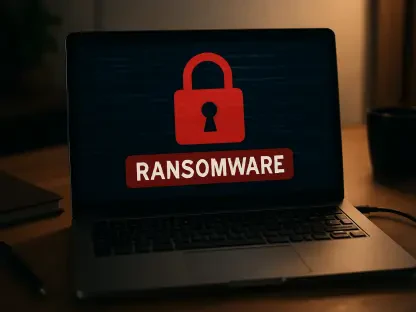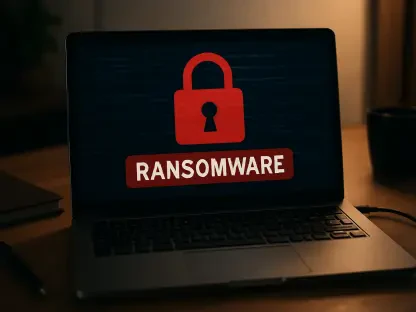Why Messaging Apps Are in the Crosshairs—and Why CISA Is Speaking Up Now
When a government agency breaks routine to warn about spyware burrowing into everyday chats, the signal is clear: attackers see messaging apps as the shortest route to the heart of a phone’s data and trust. Researchers across incident response firms, mobile forensics labs, and policy circles converged on the same point this week—campaigns are escalating, and the mix of QR-pairing abuse, zero-click exploitation, and trojanized “updates” has outpaced casual defenses.
Specialists who track both state-aligned and mercenary operations said the stakes extend well beyond gossip and group threads. Encrypted apps carry session tokens, notifications, and access hooks that translate into full-device leverage, especially against senior officials and under-resourced NGOs. In that light, CISA’s refreshed guidance landed as a cross-sector nudge: broaden defenses, shrink exposure, and treat chat platforms as high-consequence terrain.
Inside the Campaigns Upending Mobile Trust
Field investigators from the U.S., Europe, and the Middle East described intersecting waves of tradecraft aimed at keeping victims unaware while keeping access durable. Some flagged a steady rise in multi-vector playbooks—combine a quick QR hijack with a later zero-click—to reduce reliance on any single exploit and to muddle attribution.
Policy voices, meanwhile, pointed out a tougher dilemma for platforms: disclosure timing and patch cadence collide with user convenience, and encrypted ecosystems complicate telemetry. Several sources urged tighter defaults and faster mitigations, even if that means short-term friction for users who value seamless pairing and cross-device sync.
Bypassing the Human: From QR-Pairing Tunnels to Zero-Click Surprises
Mobile exploit researchers emphasized three doors into the same room. First, desktop-linking via QR codes can be coerced through social prompts, giving attackers live session mirrors. Second, zero-click bugs in message parsing pipelines erase the need for persuasion, landing code execution before a notification is read. Third, counterfeit “upgrade” apps mimic trusted brands, seeding implants where stores are sidelined.
Disagreement surfaced over prioritization. Some urged elevating zero-click defenses because they scale quietly across regions; others argued QR hardening pays faster dividends, since pairing flows are common and poorly governed in many organizations. Both camps agreed that persistence often arrives later—through notification hijacks, accessibility abuse, or secondary loaders.
The Business of Intrusion: Commercial Spyware and Its Preferred Prey
Analysts tracking the market agreed that commercial vendors remain the backbone of these operations, offering turnkey implants, staging infrastructure, and customer support. State-linked buyers gain speed and plausible deniability, while proxies and brokers recycle tooling across conflicts and jurisdictions.
Targeting patterns, according to incident responders, cluster around senior government, military, and civil-society leadership during diplomatic inflection points. Legal pressure and sanctions have raised costs, yet vendors adapt with cross-border hosting, shell entities, and modular kits that can be swapped mid-campaign.
Encrypted Chats as Gateways, Not Fortresses
Security architects cautioned that encryption protects transport, not endpoints. Message content, metadata, and permissions—especially notification access—become stepping-stones for lateral control, data exfiltration, and token theft. Once on-device, attackers leverage the very privacy features that keep outsiders blind.
Regional comparisons showed different blends: some teams saw sandbox evasion paired with notification spoofing, while others documented MFA token lifts via chat-based integrations. Across cases, the consensus held that endpoint compromise neutralizes cryptography’s promise if basic hygiene and app governance lag.
Civil Society Under Strain: Uneven Defenses in a Global Fight
Civil-society advocates painted a harsher picture of constraints: limited MDM coverage, sporadic patching, and thin incident response capacity. In contrast, government and large enterprises increasingly pilot device attestation and rapid update programs that blunt the newest chains.
Practitioners urged realistic help—curated guidance, pooled threat intel, and donor-backed mobile security stacks that include attestation, MTD, and managed updates. CISA’s civil-society advisory was welcomed as a bridge, but many argued that sustained funding and simple playbooks remain the force multipliers.
What to Do Now: Practical Moves and Programmatic Defenses Aligned to CISA’s Update
Across interviews, the shared takeaway was blunt: these attacks are quiet, targeted, and data-driven; high-profile individuals and low-resourced groups sit in the blast radius. Short-term moves earned broad support—lock down QR-linking features, install only from trusted stores, enable automatic updates and rapid security responses, trim notification content, and restrict accessibility services and sideloading.
Longer-term programs drew consensus too: deploy mobile threat defense and device attestation, enforce least-privilege app permissions, segment communications by role and sensitivity, and set rapid patch SLAs with clear compromise playbooks. Communications leaders advised pre-staging legal and PR response for spyware incidents, alongside trusted hotlines and safe-reporting workflows built for speed.
Staying Ahead of Adaptive Adversaries
Participants reaffirmed a core message: messaging platforms formed a prime battleground, commercial spyware persisted despite pressure, and endpoint hygiene proved decisive. Expectations centered on continued evolution in zero-click delivery, reuse of commodity exploits, and cross-app pivoting that tested assumptions about pairing and notifications.
This roundup closed on action, not alarm. Teams moved toward CISA’s updated guidance, invested in mobile basics and role-based training, supported policy and legal curbs on spyware, and funded protections for civil society. For further reading, sources pointed to mobile threat defense evaluations, secure messaging deployment guides, and recent public advisories that mapped the shifting tactics and the defenses that kept pace.









